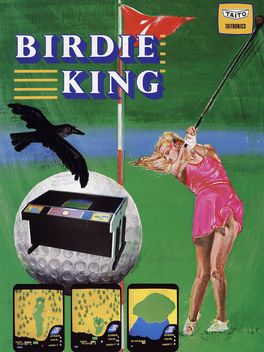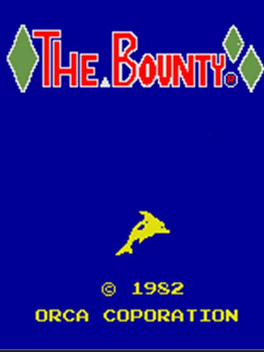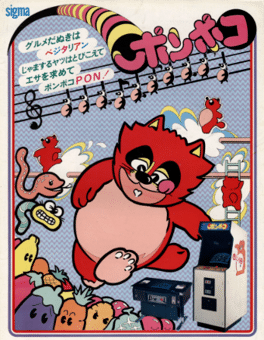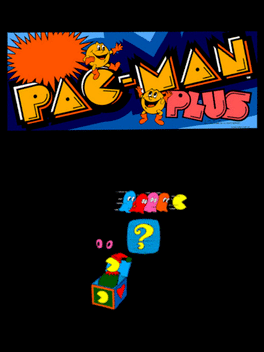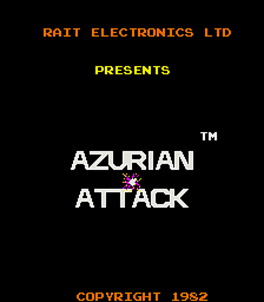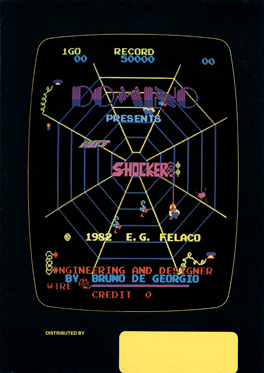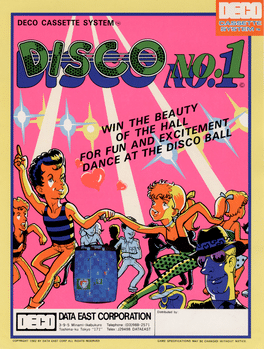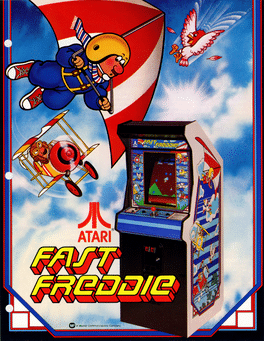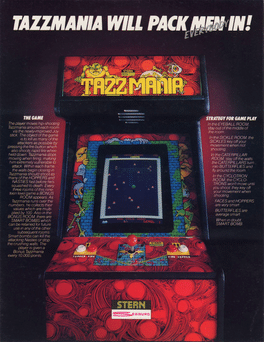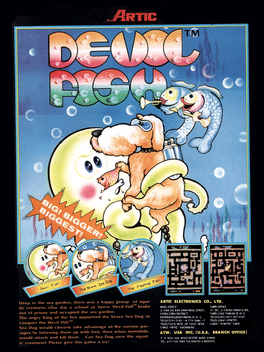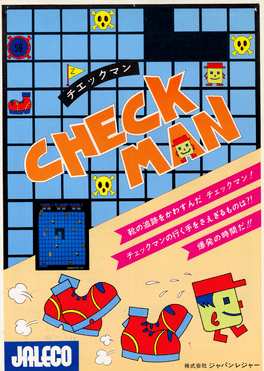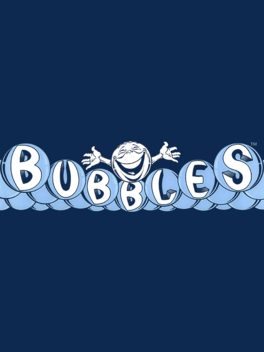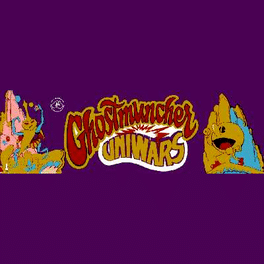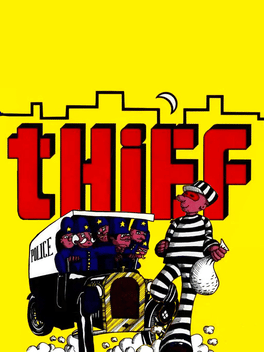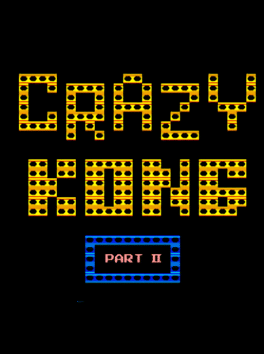New Arcade Games - Page 124
-
Birdie King
1982
Birdie King
1982
A golf arcade game released in 1982 by Taito. It was followed by two sequels: Birdie King 2 in 1983, and Birdie King 3 in 1984. -
The Bounty
1982
The Bounty
1982
Vertical scrolling marine shooter from the company Orca, which released 14 arcade cabinets between 1981 and the industry crash in 1983. -
Ponpoko
1982
Ponpoko
1982
You control a tanuki, or raccoon dog, who climbs up ladders, walks across floors and jumps over gaps while avoiding red and yellow snakes. The cat must collect all the fruits and vegetables in order to advance to the next level. There are also baskets that contain either snakes, fruits, vegetables or other bonus items. -
Pac-Man Plus
1982
Pac-Man Plus
1982
Pac-Man Plus is an Action game, developed and published by Bally Midway, which was released in 1982. Gameplay is nearly identical the original Pac-Man. However, the game features new gimmicks that make the game harder, such as faster speed, disappearing mazes, and invisible enemies. -
Azurian Attack
1982
Azurian Attack
1982
Azurian Attack is a shoot 'em up arcade game released by Rait Electronics in 1982. The game features similar graphics and sounds to "Galaxian" except your fighter can move in 8 directions. The game was programmed inhouse by Rait Electronics who were based in Christchurch, New Zealand and the game code runs on a modified Galaxian Board. -
Alpine Ski
1982
Alpine Ski
1982
Maneuver a skier through a downhill ski course, a slalom course, and a ski jumping competition. -
Joyman
1982
-
Jackson
1982
-
Hot Shocker
1982
-
Disco No.1
1982
Disco No.1
1982
El jugador toma el papel de un muchacho en patines que debe evitar a los chicos malos para ganarse el amor de las chicas bonitas. Al patinar se va dejando un rastro en el suelo. Si con dicho rastro se forma un rectángulo que encierre a una o más chicas se ganan puntos, cuya cantidad depende de la cantidad de chicas encerradas y del tamaño del recuadro. También se ganan puntos recogiendo los elementos que se encuentran repartidos en la pista de baile. -
Flyboy
1982
Flyboy
1982
ake off on a fantastic video trip. A voyage that simulates the thrills and skills of actual Hang Gliding. Players use the joystick to control Freddie, but good timing and strategy is necessary to successfully negotiate invisible air currents, wind direction and up and down drafts. This game has incredible visual impact for this time, Freddie flies the skies over the Alps--over trains, trees, bridges, through winter and summer seasons; over the Pacific--over a yacht, tropical islands, an aircraft carrier; and over Egypt--camels, Pyramids, the Taj Mahal, the Sphinx, through day and night landscapes. It's a complete global challenge with non-stop action over a continuously changing panorama below. -
Tazz-Mania
1982
Tazz-Mania
1982
You control a Q*bert-style character with a machine gun. The object of the game is to shoot all the "hoppers" (small non-moving characters) in room and then move onto the next. Each room has its own unique monster type that attacks you and the room is named accordingly. For instance, the first two are: The Face Room - Square face monsters that chase you The Evil Eyeball Room - Eyeball monsters that bounce around The Smart Bomb kills all the monsters currently on-screen and stops the walls that are slowly closing in from the left and the right. Every third screen is a bonus room containing two Smart Bombs and numbers that can be collected in ascending order to gain points. The walls in the bonus rooms close in much faster. Use an eight-direction machine to kill the hoppers. Hold the fire button down for rapid fire, but you will be unable to move while doing so. Bullets have a limited range and also bounce off of the walls. Running into hoppers or monsters will kill you. When all the hoppers are killed the top and b -
Devil Fish
1982
Devil Fish
1982
The player controls a dog who must feed squids in order to make them trap themselves on the several passages of the maze, as they will be too fat to advance. When they are trapped, the dog must go against them and touch them. Immediately after that, a little house will appear on the center of the maze. Touch it and a part of a drawing will be revealed. Repeat this procedure until the image is totally revealed and you'll pass to the next level. -
Check Man
1982
Check Man
1982
The screen is broken up into 14 x 13 tiles or checks. When the player passes over the tiles, they disappear so each tile can only be walked over once per level. Some tiles are taken up by skull and crossbones which kill the player if walked into. The skulls turn to time bombs one at a time and the player must walk over them to defuse them before they explode. They must avoid the skulls and make sure they do not block off a possible future route by circling it. Some tiles are also flags which can be collected for bonus points. When all skulls have turned to bombs and been defused, the level is complete and begins again at a harder level. As the game develops, stomping boots are introduced that move around the playing area. These are also deadly to the player. -
Bubbles
1982
Bubbles
1982
Bubbles is an action game with puzzle elements where the player controls the protagonist, a soap bubble, from a top-down perspective. The object is to clean a kitchen sink by maneuvering the bubble over ants, crumbs, and grease to absorb them. The bubble will grow larger the more objects it absorbs. The player is impeded by enemies—brushes, razor blades, roaches, and sponges—that are deadly to the character. Except for razors, enemies also compete with the player to absorb objects in the sink. Once the bubble reaches a certain size, it will acquire a smiling face and become invulnerable against brushes and sponges; contact with those will reduce the bubble's size to the point it becomes vulnerable again. After all the objects are gone, the player will progress to the next level if the bubble is large enough. If the bubble is not large enough at that point, or if the player enters the drain while the bubble's too small, a life is lost. Once the bubble becomes large enough, the drain in the center of the sink wil -
Ghost Muncher
1982
Ghost Muncher
1982
This is Pac-Man/Puck-Man except the colors have been changed as have the sounds and the names of the ghosts. -
Thief
1981
-
Crazy Kong Part II
1981
-
Winners Circle
1981
Winners Circle
1981
Cocktail Horse Racing game in which 1 to 4 players can participate in determining the 1st and 2nd place winning horse from 7 that race against one another Winners Circle was produced by Corona in 1981. Corona released 2 machines in our database under this trade name, starting in 1981. Corona was based in United States. Other machines made by Corona during the time period Winners Circle was produced include: -
Super Missile Attack
1981
